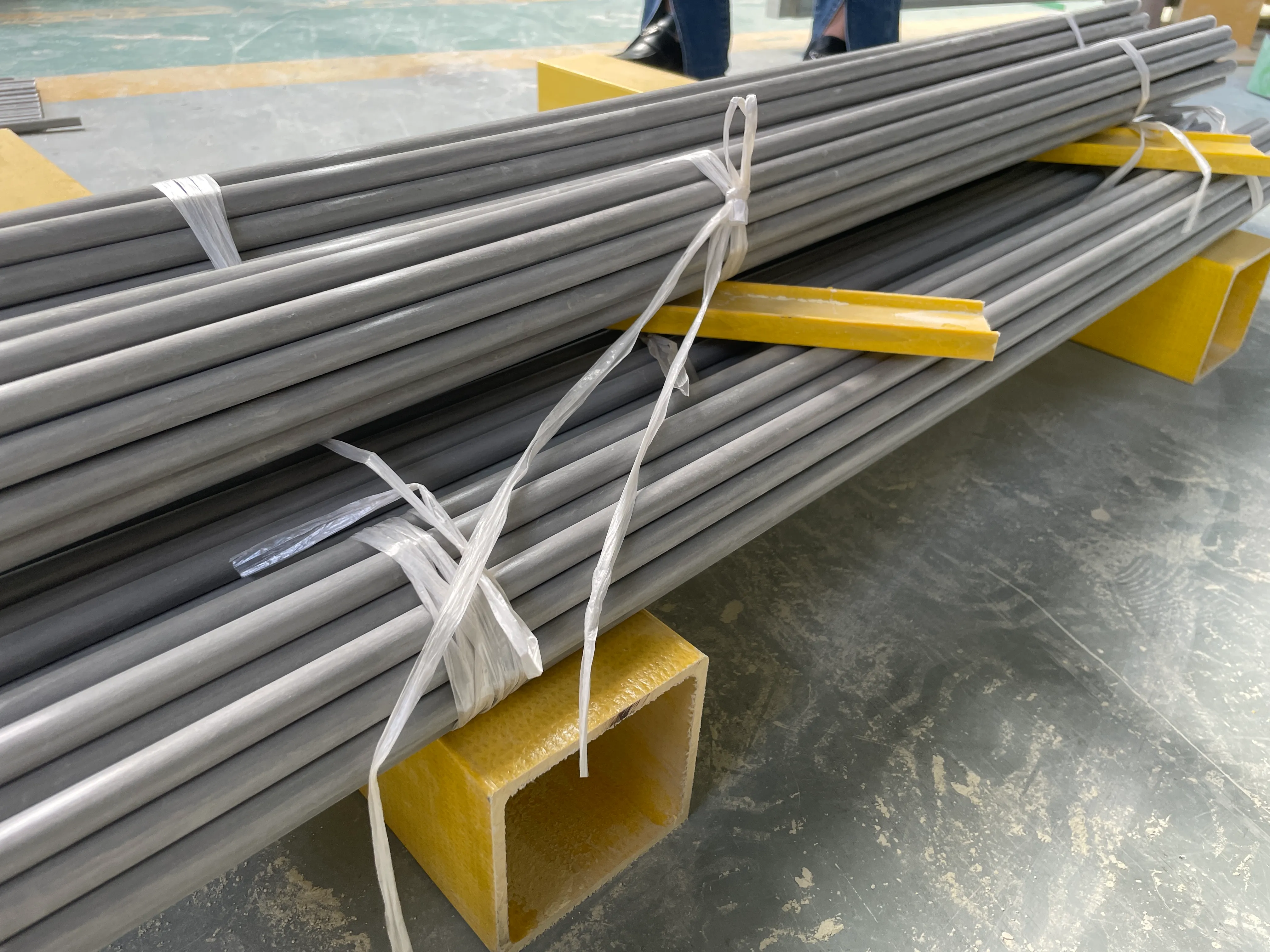loading...
- No. 9, Xingyuan South Street, Dongwaihuan Road, Zaoqiang County, Hengshui, Hebei, China
- admin@zjcomposites.com
- +86 15097380338
- Welcome to visit our website!
Exploring the Advantages and Applications of Fiber Reinforced Polymer Rods in Modern Engineering
The Versatility of FRP Rods A Comprehensive Overview
Fiber Reinforced Polymer (FRP) rods have emerged as a transformative material in various engineering applications, from construction to telecommunications. Combining strength, durability, and resistance to environmental stresses, FRP rods offer a multitude of advantages over traditional materials such as steel and concrete. This article delves into the characteristics, benefits, and diverse applications of FRP rods, showcasing why they are becoming a preferred choice in modern industry.
Understanding FRP Rods
FRP materials are composed of a polymer matrix reinforced with fibers, typically made from glass, carbon, or aramid. The resulting composite is characterized by its lightweight nature and exceptional tensile strength, making it highly desirable in applications where weight savings are crucial without compromising structural integrity. FRP rods, in particular, leverage these properties, enabling their use in both structural and non-structural applications.
Key Advantages of FRP Rods
1. Corrosion Resistance One of the most significant benefits of FRP rods is their inherent resistance to corrosion. Unlike metal rods that can rust and degrade over time, FRP rods withstand harsh environmental conditions, including exposure to chemicals, saltwater, and extreme temperatures. This longevity reduces maintenance costs and extends the lifespan of structures.
2. Lightweight and Easy to Handle FRP rods are considerably lighter than steel and concrete. This lightweight property not only makes them easier to transport and handle during installation but also reduces the overall load on structural components. As a result, FRP rods are especially advantageous in applications that demand high strength with minimal weight.
3. Low Thermal Conductivity FRP materials exhibit low thermal conductivity, making them ideal for applications in thermal insulation. This property can be particularly beneficial in environments with extreme temperature fluctuations, ensuring that structures maintain their integrity and performance.
4. Flexibility in Design The versatility of FRP materials allows for a wide range of design applications. FRP rods can be customized in terms of size, shape, and composition to meet specific engineering requirements. This flexibility enables architects and engineers to innovate and create complex structures that may not be feasible with traditional materials.
frp rod

Applications of FRP Rods
FRP rods have found their way into a plethora of industries, including
- Construction and Infrastructure In civil engineering, FRP rods are widely used as reinforcement in concrete structures, such as bridges, tunnels, and buildings. Their corrosion resistance is particularly crucial in marine environments, where traditional materials may fail prematurely.
- Telecommunications In the telecommunications sector, FRP rods are utilized in the manufacturing of light poles and antenna supports. Their non-magnetic property and low weight enhance the efficiency of signal transmission and support various aerial equipment.
- Sports Equipment The sporting goods industry leverages FRP rods to enhance the performance and durability of equipment such as fishing rods, archery bows, and golf clubs. The lightweight yet strong nature of FRP improves maneuverability and effectiveness.
- Wind Energy In wind turbine construction, FRP rods are used in rotor blades and support structures due to their high strength-to-weight ratio, which improves energy efficiency and reduces the overall material costs.
Conclusion
The rise of FRP rods in modern engineering underscores a significant shift towards more sustainable and efficient materials. Their unique properties and versatile applications make them an innovative solution across various industries. As technology progresses and the demand for high-performance materials continues to grow, FRP rods are poised to play an increasingly vital role in shaping the future of construction, telecommunications, and beyond. By embracing these advanced materials, industries can achieve greater efficiency, sustainability, and resilience in their projects.
-
Revolutionizing Industrial Safety with ZJ Composites' Mini Mesh GratingNewsNov.14,2025
-
Premium FRP Profiles and FRP Grating Revolution for Global WholesalersNewsNov.14,2025
-
Ultimate Strength with ZJ Composites FRP Profiles for Wholesale SuccessNewsNov.14,2025
-
ZJ Composites Covered Grating – The Durable Flooring Solution for Smarter Industrial SpacesNewsNov.14,2025
-
Mini Mesh Grating Enhancing Strength and Style in Every ProjectNewsNov.14,2025
-
FRP Pressure Vessels by ZJ CompositesNewsNov.14,2025
-
Transforming Industrial Spaces with Advanced Frp GratingNewsNov.11,2025
